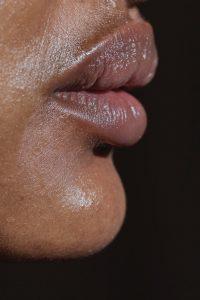Chin Surgery (Genioplasty & Mentoplasty) are cosmetic surgical procedures that can improve the shape and size of your chin. These procedures are becoming increasingly popular as they can help enhance your facial features, improve your self-confidence, and provide you with a more harmonious facial structure. In this article, we will discuss what Chin Surgery Genioplasty & Mentoplasty are, how they work, and what you can expect during and after the procedure.
What is Chin Surgery – Genioplasty & Mentoplasty?
Genioplasty and Mentoplasty are surgical procedures that can reshape and reposition the chin bone or alter the soft tissues around the chin. These procedures are commonly performed to correct a weak or receding chin, a prominent chin, or asymmetry in the chin. The surgery can be done using various techniques, depending on the patient’s needs and goals.
How do the Chin Surgeries, Genioplasty & Mentoplasty work?

Chin Surgery Genioplasty & Mentoplasty involve reshaping the chin bone or modifying the soft tissues around the chin. The surgeon will make an incision either inside the mouth or under the chin to access the chin bone. The surgeon will then use specialized instruments to reshape or reposition the chin bone. If the soft tissues around the chin need to be modified, the surgeon will make the necessary incisions and remove or add tissue to achieve the desired result. The procedure usually takes 1-2 hours and is performed under general anesthesia.
The Genioplasty Procedure
The genioplasty procedure can be performed using different techniques, depending on the patient’s specific needs and goals. The most common techniques include:
- Sliding genioplasty: This technique involves making a horizontal cut in the chin bone and moving it forward or backward to achieve the desired position. The bone is then secured in place using screws or plates, and the incision is closed with sutures.
- Implant genioplasty: This technique involves placing a silicone or other biocompatible implant over the existing chin bone to enhance its shape and size. The implant is inserted through a small incision made under the chin or inside the mouth, and the incision is closed with sutures.
- Reduction genioplasty: This technique involves removing a portion of the chin bone to reduce its size or shape. The bone is carefully sculpted to achieve the desired result, and the incision is closed with sutures.
The genioplasty procedure is usually performed under general anesthesia, and the duration of the surgery can vary depending on the technique used. After the surgery, the patient may experience some swelling, bruising, and discomfort, which can be managed with pain medication and cold compresses.
What are the benefits of Chin Surgery Genioplasty & Mentoplasty?
Chin Surgery Genioplasty & Mentoplasty can provide numerous benefits, including:
- Improved facial balance and proportion
- Enhanced jawline and neck contour
- Correction of a weak or receding chin
- Correction of a prominent or asymmetrical chin
- Enhanced self-confidence and self-esteem
What are the risks of Chin Surgery Genioplasty & Mentoplasty?
like any surgical procedure, Chin Surgery Genioplasty & Mentoplasty come with some surgical risks and potential complications, such as:
- Infection: There is a risk of infection after any surgery, which can be managed with antibiotics and proper wound care.
- Bleeding: There may be some bleeding during or after the surgery, which can be controlled with pressure and, if necessary, additional surgical intervention.
- Nerve damage: The nerves around the chin and lower lip can be damaged during the surgery, which can cause numbness, tingling, or weakness. However, this is usually temporary and resolves on its own over time.
- Unsatisfactory results: In some cases, the patient may not achieve the desired result after the surgery, which may require additional procedures to correct.
- Anesthesia complications: There is a risk of complications related to the use of anesthesia, including allergic reactions and respiratory problems.
What is the recovery process like after Chin Surgery Genioplasty & Mentoplasty?
The recovery period after genioplasty can vary depending on the extent of the surgery and the patient’s overall health. However, most patients can expect to return to work and normal activities within one to two weeks after the procedure.
During the first few days after surgery, the patient may need to rest and avoid any strenuous activities. They may also need to follow a soft food diet and avoid chewing hard or crunchy foods for several weeks.
The patient will need to attend follow-up appointments with their surgeon to monitor their progress and ensure that the incisions are healing properly. They may also need to wear a compression garment or bandage around the chin for several days or weeks to reduce swelling and promote healing.
FAQs on Chin Surgery:
Q: Who is a good candidate for Chin Surgery Genioplasty & Mentoplasty? A: Good candidates for Chin Surgery Genioplasty & Mentoplasty are individuals who have a weak or receding chin, a prominent or asymmetrical chin, or other chin-related concerns that affect their facial harmony and balance.
Q: Is Chin Surgery Genioplasty & Mentoplasty painful? A: Chin Surgery Genioplasty & Mentoplasty are performed under general anesthesia, so patients will not feel any pain during the procedure. However, patients may experience some discomfort and swelling during the recovery period.
Chin Surgery References:
Share
Safe and Effective Chin Augmentation With the Hyaluronic Acid Injectable Filler
Chin Augmentation Using Silastic Implants.
Optimizing the Chin and Jawline Appearance: Does Surgery or Injection Make Sense?